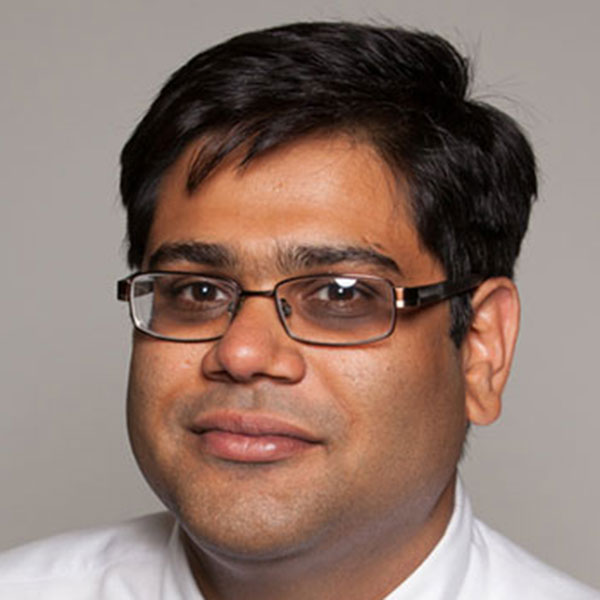Calendar Icon
Dec 08, 2017
Person Bust Icon
By Karl Vogel
![]() RSS
Submit a Story
RSS
Submit a Story
The high-tech new 3D printers being installed in the College of Engineering could help in the creation of a process for printing biological materials, such as tissue or skin or edible meat protein, that could save millions of lives worldwide.
Prahalada Rao, assistant professor of mechanical and materials engineering, and a team of researchers from Virginia Tech are working on a $1 million National Science Foundation Cyber Physical Systems (CPS) grant to develop the 3D printing process. The grant was written in collaboration with Rao’s postdoctoral adviser at Virginia Tech.
With expertise in 3D metal printing, sensing, controls and statistics, Rao is working on the quality control aspects of the process. He will soon be utilizing the College of Engineering’s new 3D printers, specifically one purchased for printing tissue.
Because of the new printers, Nebraska, he said, is one of the few places in the United States where this research would be possible.
“In a three-state radius, we are the only people with the latest technology. I know faculty who go all the way to North Carolina to be able to do their experiments,” Rao said.
“When you want to build it in scale, you have to be able to do things like they do it in industry. You have to be able to transfer that knowledge on to a professional system. What we are getting here is state-of-the-art.”
Eventually, 3D printers could make artificial organs for transplantation that could possibly save many of the 12 million people who die every year waiting for organ transplants. They could also make possible the printing of edible tissue, such as beef, pork or poultry, to help alleviate the world’s hunger problem.
“We can’t satisfy the demand,” Rao said. “We could solve that problem if we could print organs. To get there, we need to be able to understand how the material behaves, we need to do this on an industrial scale. Right now, people have been able to print small things (biological materials), but we want to be able to print them reliably.”
Work on the project began Sept. 1, but Rao said getting to the point where the technology meets the demand could take many years to perfect the process. Rao said scientists have been able to print simpler tissues, like ovaries for rats, but making complex organs, such as a kidney has proven more difficult.
“The internal structure of some organs, you can get the form but there are no blood vessels inside of it,” Rao said. “Now, it’s just tissue inside. Can we make it work when someone requires a kidney transplant? That’s at least 10 years away.
“Some aspects, like printing walls for the heart where it’s just a tissue, or a stent, we could probably do that in 5-10 years. Could it produce insulin like a pancreas does? I think we are a lot farther away from that. The low-hanging fruit is if you could print something like skin or food, and that will come sooner.”
Though much of his work has been with inorganic materials, Rao is no stranger to biomedical engineering. His first grant was to help understand the brain by using EEG signals to diagnose epilepsy. This project, he said, brings him back to areas of engineering that he is passionate about.
“What is a guy like me, an engineer who works with metals, doing with this project? One of my passions is looking at data. Whether it comes from the brain, the heart or a machine, the physical process is always trying to tell you something,” Rao said. “Understanding how I can look deeper into a system by listening to the sensor signals and discerning what they are trying to say. That’s what moves me.
“It takes reading up and making the right collaborations. You can’t build them on your own. None of the engineering problems we have today can be solved by just one person. They need a team and a working relationship and you need some audacity. I’ve never done this, like I said. This is exciting. Everybody’s doing XYZ, I want to do something different.”
Submit a Story
